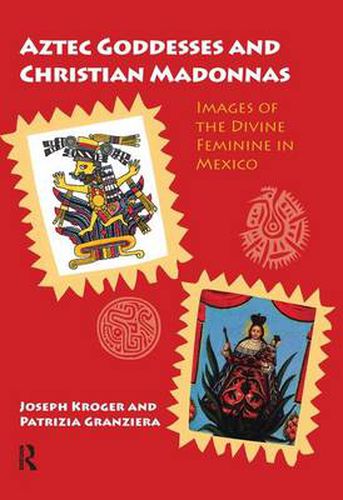Readings Newsletter
Become a Readings Member to make your shopping experience even easier.
Sign in or sign up for free!
You’re not far away from qualifying for FREE standard shipping within Australia
You’ve qualified for FREE standard shipping within Australia
The cart is loading…






The face of the divine feminine can be found everywhere in Mexico. One of the most striking features of Mexican religious life is the prevalence of images of the Virgin Mother of God. This is partly because the divine feminine played such a prominent role in pre-Hispanic Mexican religion. Goddess images were central to the devotional life of the Aztecs, especially peasants and those living in villages outside the central city of Tenochtitlan (present day Mexico City). In these rural communities fertility and fecundity, more than war rituals and sacrificial tribute, were the main focus of cultic activity. Both Aztec goddesses and the Christian Madonnas who replaced them were associated, and sometimes identified, with nature and the environment: the earth, water, trees and other sources of creativity and vitality. This book uncovers the myths and images of 22 Aztec Goddesses and 28 Christian Madonnas of Mexico. Their rich and symbolic meaning is revealed by placing them in the context of the religious worldviews in which they appear and by situating them within the devotional life of the faithful for whom they function as powerful mediators of divine grace and terror.
$9.00 standard shipping within Australia
FREE standard shipping within Australia for orders over $100.00
Express & International shipping calculated at checkout
The face of the divine feminine can be found everywhere in Mexico. One of the most striking features of Mexican religious life is the prevalence of images of the Virgin Mother of God. This is partly because the divine feminine played such a prominent role in pre-Hispanic Mexican religion. Goddess images were central to the devotional life of the Aztecs, especially peasants and those living in villages outside the central city of Tenochtitlan (present day Mexico City). In these rural communities fertility and fecundity, more than war rituals and sacrificial tribute, were the main focus of cultic activity. Both Aztec goddesses and the Christian Madonnas who replaced them were associated, and sometimes identified, with nature and the environment: the earth, water, trees and other sources of creativity and vitality. This book uncovers the myths and images of 22 Aztec Goddesses and 28 Christian Madonnas of Mexico. Their rich and symbolic meaning is revealed by placing them in the context of the religious worldviews in which they appear and by situating them within the devotional life of the faithful for whom they function as powerful mediators of divine grace and terror.